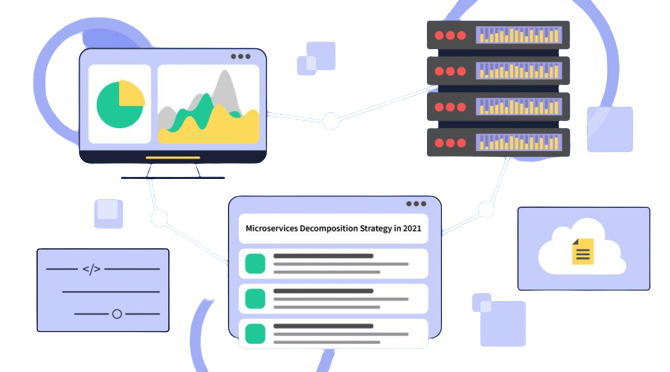Microservices is a software design approach that decomposes a monolithic application into a set of loosely coupled and independently deployable services. These services are small, focused, and perform specific business functions.
In recent years, Microservices Architecture has gained immense popularity as a powerful solution to handle complex, large-scale applications. Microservices is a software design approach that decomposes a monolithic application into a set of loosely coupled and independently deployable services. These services are small, focused, and perform specific business functions.
Microservices architecture is an increasingly popular approach to software development that is gaining traction among developers and businesses alike. While it offers many benefits, it also presents some challenges that must be considered before adopting it as a development strategy.

Benefits of Microservices Architecture
-
Scalability of Microservices Architecture:
One of the most significant benefits of microservices architecture is its scalability. Because microservices are independent, they can be scaled horizontally, meaning that new instances can be added to handle increased traffic. This allows businesses to grow and scale more easily without having to completely rewrite their applications or infrastructure.
Additionally, microservices architecture enables faster deployment times, as each microservice can develop, test, and deployed independently. This means that developers can quickly respond to changing business needs, fix bugs, and add new features without disrupting the entire system.
-
Agility:
Microservices architecture is ideal for organizations that need to respond quickly to market changes. With independent services, development teams can work on features and release them more frequently, providing faster time to market.
-
Fault tolerance:
Another advantage is its fault tolerance. With a monolithic application, if one component fails, the entire system may go down. However, with microservices, if one service fails, it only affects that particular service. The rest of the system can continue to function, meaning that users are less likely to experience downtime or interruptions in service.
-
Microservices Architecture is Cost savings:
With Microservices, the development process can streamline, leading to reduce development and deployment costs. Smaller services can develop and deploy more quickly, reducing the time and effort required for development and testing.
-
Microservices Architecture is Technology independence:
Microservices can develop using different programming languages and technologies, making it easy to adopt new technologies without disrupting the entire system.
Challenges of Microservices Architecture
However, the use of microservices also presents some challenges.
-
Increased complexity:
One of the most significant is the complexity of managing multiple services. In a monolithic application, all the code is in one place, making it easy to manage and deploy. With microservices, the code is spread across multiple services, making it more challenging to manage, monitor, and troubleshoot.
-
Distributed system:
It is a distributed system, which means that services communicate over the network. This increases latency, and network failures can affect the performance of the system.
-
Data consistency:
Another challenge is data consistency. Because each microservice has its database, it can be difficult to maintain consistency across the entire system. Developers must take care to ensure that data has synchronized correctly and that updates are made consistently.
-
Testing:
Testing a Microservices-based system can be challenging. Developers need to ensure that each service works correctly and integrates seamlessly with other services.
-
DevOps:
Adopting Microservices requires changes in the development, deployment, and monitoring processes. Organizations need to adopt a DevOps culture and invest in tools that support Microservices.
-
Security:
It introduces new security challenges. As the services communicate over the network, it’s essential to secure the communication and ensure that sensitive data has protected.
Conclusion
Microservices Architecture provides several benefits, including scalability, agility, resilience, cost savings, and technology independence. However, it also presents challenges, including increased complexity, distributed systems, testing, DevOps, and security. Organizations considering adopting this Architecture need to carefully evaluate their needs and determine if Microservices is the right solution for their business. If implemented correctly, Microservices can help organizations create scalable, resilient, and agile applications.
BACK










